My Personal Top Ten Games, a Farewell to The Stampede
May 29, 2018
After writing for The Stampede for four years now, it’s time that I write my long-awaited and long-dreaded final article. As of right now, I have written a total of 58 articles, and if I’m going to be honest, I have put more love and passion into what I publish than what might be seen. I decided that after giving my opinion on so many games, series, and more, I thought I should finally take it upon myself to list off my top ten favorite games as of May 18, 2018.
10.
There aren’t many recent games that have caught my interest right off the bat, especially if they’re a clone of another game. However, when you throw some personality into the mix along with a boat-load of interesting weapons, good characters that make up for what they lack in stellar character development with humor, and a wild story that keeps the player hooked, you’ve got something worth looking further into. If you haven’t figured out what series I’m referring to yet, might I direct your attention over to the insanity that is Saints Row. Now, the question becomes: Which one? I’ll be honest, I’m not the fondest of the second game despite how many people love that version, and I can’t say I’ve played the first. While I thoroughly ventured through the fourth one (Saints Row IV) first (it was also one of the first games I got for my PS4) and really enjoyed it, and since I don’t see why people go nuts over the Saints Row II, there’s only one option left that’s widely known: Saints Row the Third.
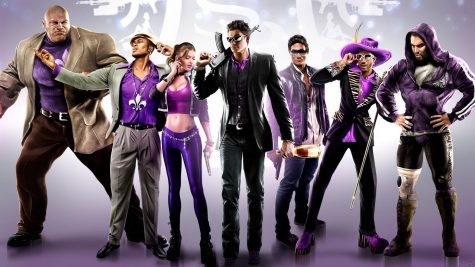
Saints Row the Third was the game that redefined the series as more than just a Grand Theft Auto clone. Rather than a gritty gang dispute, this series jumped the shark and made sure you knew it was proud of that. One defining trait of the series is the humor, from the common and well-placed vulgarity to the jokes to the snappy retorts, be it visual or simply verbal humor, there isn’t a single mission I played through that didn’t at least earn a laugh. Regardless, there are some moments where the game forgets that every line of dialogue isn’t the funniest string of words ever spoken, and a couple jokes fall pretty flat. Thankfully, this game doesn’t feel the need to perpetuate a terrible running gag for too long.
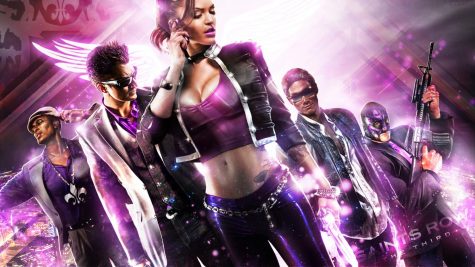
Aside from that, the plot gets a little scattered. The Third Street Saints have, since the last game, become pop culture icons, spawning merchandise, stores that sell their branded loot, and even an energy drink called Saints Flow… you can’t make this stuff up, folks. Anyways, a bank robbery goes awry and the boss (the player), Shaundi, and the boss’ right-hand-man Johnny Gat are all taken into custody, but are swiftly bailed-out by Phillipe Loren, a Fre- I mean Belgian, crime boss who demands a significant cut of the Saints’ total gross income in exchange for his display of kindness. Rightfully declining the offer, a fight swiftly broke out on the plane they were on, resulting in Gat staying behind to keep Loren occupied while the boss and Shaundi escaped, leaving Johnny assumed dead. Not long after, his funeral is ambushed by another gang known as the Luchadores who are part of a larger organization Loren was the leader of, hoping to take the Saints down a couple notches. Led by Eddie “Killbane” Pryor who took Loren’s spot as the leader of this alliance, they’re in cahoots with two other crime organizations: the Deckers, lead by Matt Miller, and the Morningstar which is now headed by the DeWinter sisters: Viola and Kiki.
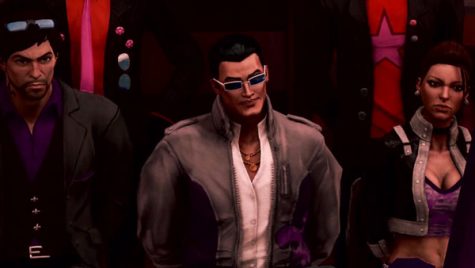
With this knowledge swiftly in the Saints’ grasp, they set out to drive the other groups out of Stillwater and retake their proverbial throne. Sound bizarre and complicated? It may seem that way typed out, but the game luckily wastes no time in giving you all the exposition you need in pretty manageable pieces. Although Saints Row IV rivals that of Ratchet and Clank for the most wacky and entertaining assortment of weaponry in the gaming scene, Saints Row the Third set the rest of the series down this path of crazy yet pretty neat armaments that can be used to blow away your foes more ways than imaginable. In what other game could you use a gun that fires an octopus capable of turning foes into allies, a remote that can give the player full control of any vehicle it’s aimed at, like an RC car, or a shotgun that summons sharks to burst from the ground to eat your foes? Not many. However, since this was merely the start of the bizarre weaponry which peaked in the fourth game, it doesn’t get too insane.
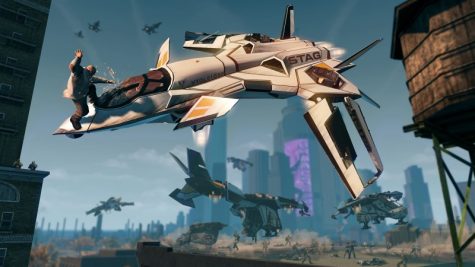
The only gripes I have with this game is that not only is it a bit glitch, but the system of completing vehicle theft side missions becomes totally broken and nearly impossible after a certain plot point. In the story, Stillwater gets a bit too out of hand, prompting a takeover by a secret military called STAG. From here on out, any encounter with the law is beefed-up with these hard-hitting, brutal troops which will shred any vehicle you hijack in no time flat unless you’re either lucky or rocking a solid defense. I cannot stress how many times on my first playthrough I furiously restarted one of these mere distractions from the story just because it was destroyed since, upon taking one of said marked vehicles, every officer in the area and then some want to track you down like you’re a sugar-coated god among men.
That aside, it’s obvious that this game isn’t to be taken very seriously. I’d recommend it up and down, but I think I just did. Getting tired of Los Santos? Head over to SteelPort, it’s quite the lead-filled party.
9.
There are very few handheld games that have truly engrossed me to the point of playing them when I’m not on the go. There are even fewer games that actually provide a challenge mentally and build upon the player’s IQ that’s actually fun. When I think of a game that’s capable of combining all of these characteristics at once, I think of two series: Phoenix Wright and Professor Layton. The two of them are quite different since the Phoenix Wright games are about a lawyer by the same name who solves tricky and incredibly interesting cases, and the other is about what I can only describe as the Sherlock Holmes of gaming, cracking some of the most jarring, imaginative, and intricately brilliant mysteries you could think of. With a similar art style, similar story-driven thought-provoking gameplay and equally smart protagonists, everyone was practically foaming at the mouth by the mere thought of the two appearing in a single game, and wouldn’t you know it, the developers read our minds like a case file.
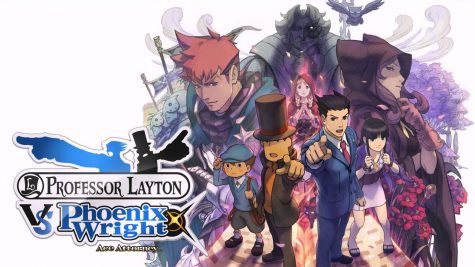
Phoenix Wright vs. Professor Layton is like one big anime crossover episode, and it’s done exceedingly well. The game (as you may have expected) is a mixture of the two. Half of the game is spent with Layton as you solve mysteries all the while uncovering a plentiful amount of puzzles, each more difficult than the last, yet with some that may as well be at the end of the game due to how hard they can be. The other half is spent investigating and fighting for the defendant in a courtroom as Phoenix, trying your hardest and going all-out logically to get a “Not Guilty” verdict.
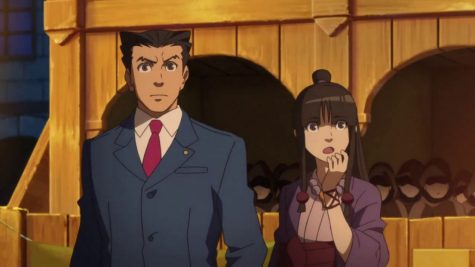
Another strongpoint this game has is the story. The setup is relatively simple: Layton and his young apprentice, Luke Triton, receive a letter from an old colleague of Layton’s who begs him to investigate an attack involving him, a mysterious young lady, and some seemingly supernatural circumstances. However, what they eventually find is a book that pulls them into a land known as Labarynthia. Meanwhile, Phoenix and his assistant, Maya Fey, finish wrapping up a mock trial overseas in London where they take on a case while there. It seems to be, on the surface, a pretty simple job of defending a girl who was set up to be framed for theft, but wouldn’t you know it, that’s the same girl who Layton and Luke were helping. From there, it’s not long before Wright and Maya are pulled in, but as it turns out, they are stricken with amnesia. Eventually, Layton and Luke cross paths with Nick and Maya, and meet up with the same girl from before, named Espella.
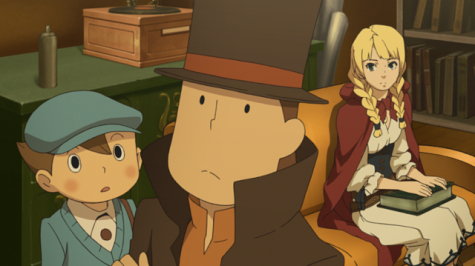
They soon find out that the fate of the land is ruled by a man known as The Storyteller who has a sort of clairvoyance where whatever he writes, happens. They also find out about the more sinister side of the town, the side that drew them there in the first place and what made them cross paths with Espella, the witch trials. Labarynthia is plagued by witches, and solves the issue with courtroom-like trials that always end exactly how you think they would: fire. This is mostly due to the prosecutioner that oversees every one of the trials, Inquisitor Barnham, a man who is held in such high regard that none dare to cross or go against him. That is until Espella is framed to be a witch, and both of our protagonists realize the shocking events that had constantly conspired. So, Nick does what he does best and takes the stand to defend their newfound friend while Layton and Luke investigate the mysteries surrounding the town and try to make heads or tails of this fantasy land.
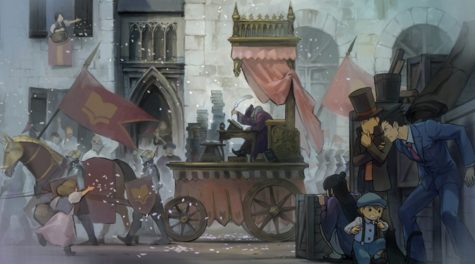
From the puzzles to the courtroom cases, or witch trials in this case, the story consistently keeps the player drawn in and guessing as a larger mystery at hand slowly reveals itself and results in some pretty surprising plot twists. I can’t recommend this game enough. If you’ve ever wanted to dip your toe into one of these game series but didn’t know where to start, I’d say to give this a go to get a beautiful taste of both. I’ll leave my thoughts on this game with this analogy: Phoenix Wright vs. Professor Layton is like a Neapolitan ice cream cone (vanilla, strawberry and chocolate mix), you get a taste of two classic favorites, and a bit of something you don’t get often. Sure, you get the mix of the three rarely, but at the end of the day, it leaves you satisfied and looking forward to more of each on their own. At least this game won’t go straight to your thighs.
8.
Speaking of incredibly good handheld games that I’ve easily sunken hour after hour into, let’s rewind back to 2009. The DS was ravaging the market, game developers were still trying to replicate the Wii’s revolutionary motion controls, and Nintendo was sitting pretty on a pile of cash the size of Donkey Kong’s banana hoard. At this moment in time, younger me was about as happy as a character from the Animal Crossing series, playing games like Super Smash Bros. Brawl, Super Mario Galaxy, Star Wars: Battlefront II, another entry that’ll pop up later on this list, and more, but he wanted to finally play a game in a series that he hadn’t stepped foot in for the first time. He saw the game advertised on TV, he saw articles about it in all sorts of gaming magazines, his brother was telling him all about the previous game in the series that he played and how this was to be a bigger, more improved, even more expansive version of the two alternating versions that had been released. That game would become the first game he ever pre-ordered, and would go on to shape his opinion on the series as a whole. That game was Pokémon Platinum.
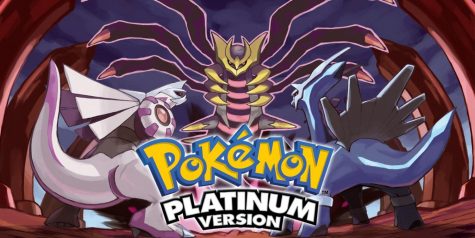
Go ahead, ask me, I dare you. Ask me which game in the series is my favorite, and I’ll refute until the Milktanks come home that Platinum is and always will be my all-time favorite in the series, and the most expansive, impressive, and replay-able entry in the series, second only to Black and White or Heart Gold and Soul Silver. Stemming from the previous entries (Diamond and Pearl), Platinum takes us back to the Sinnoh region, but with more than before. In this version, the player can get all three of the featured legendary Pokémon that were synonymous with this iteration of the series: Palkia (Pearl), Dialga (Diamond), and Giratina, the legendary featured on the cover of Platinum.

The player is kept busy with the story, which has the same premise as ever: 10 year old kid, name your rival something insulting, vulgar, or horrible, select your starter, eight gyms, badge get, so shiny!, Elite Four, evil team trying to basically destroy the world, become the very best like no one ever wa- wait, what!? Yeah, you read that right. Unlike the previous games where you had Team Rocket, (a crime organization set on ruling the Kanto and Johto regions by stealing Pokémon from trainers, headed their leader, Giovanni) and both Team Aqua and Magma, (two separate groups who each sought to either flood the Hoenn region or level it with their leaders, Maxie and Archie) there is a legitimate threat to life and limb of not just a few select individuals, but the entire world. With that in mind, this was the first time the games gave us a threat this serious. In Diamond, Pearl and Platinum, we’re introduced to Team Plasma, led by a man known as Cyrus who looks about as kind and affectionate as an angry bear. So, how does he plan to absolutely wreck the whole region and cause large scale destruction absolutely everywhere? By basically harnessing the power of the legendary Pokémon to punch a hole between the region and a space known as the Distortion World which Giratina calls home.
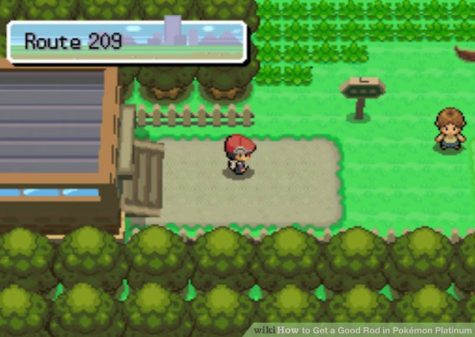
Platinum takes the top-down perspective we all associate the games with and spruces it up a bit by adding a much smoother, less pixelated look as well as a more prominent 3D view. Speaking of the gameplay, the game adds layer after layer of extra content to spend your time with. There are three notable parts of that really stand out. The first of them is the ability to go underground and mine for gems, items, and even fossils that you can regenerate into extinct Pokémon (such as Kabuto, Cranidos, and more). You can even play online with your friends and capture the flag from each other’s base. The more flags you get, the better rewards you get. Another notable feature is the return of the Battle Frontier, an area that can be accessed after defeating the Elite Four where you can take on some of the game’s most challenging battles, special types of battles, purchase exclusive items, and so much more than I can describe.
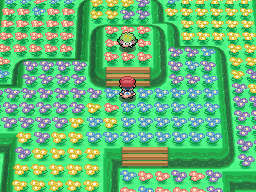
The last of the features, my personal favorite that has been around since Ruby, Sapphire, and Emerald, is that when the game was still new, there were events that happened where if you went to a GameStop, you could get a special item that allowed you to get to a previously unaccusable area to nab a super rare legendary Pokémon. You could get the Inn Pass that lets you go inside the Inn in Canalave City where you can be transported to an island to catch a literal nightmare Pokémon called Darkrai. There was the opportunity to get a secret key to allow a basement full of appliances that the poltergeist Pokémon Rotom can possess and change both appearance and type (similar to Deoxys and the meteorites from Ruby, Sapphire, and Emerald which do make a return in this game). Another gave the player an item called Oak’s Letter which opened up a meadow-like path near Victory Road where you could catch the mythical Shaymin. But, there’s one item that stands out above the rest. The one item that gives you the chance to catch the Pokémon that created the rest. With the Azure Flute, returning to Spear Pillar gives you the chance to catch the God of all Pokémon: Arceus. Despite these events ending ages ago, you can still obtain the items via cheat devices such as an Action Replay and get those rare Pokémon.
The music is another aspect of this game that brings many players back. Sure, you could make the argument that a lot of it doesn’t stick out particularly well, it’s the pieces of the soundtrack that do which bring everyone clambering back to it. Some of the most popular tracks from this game (and a few of my personal favorites in gaming) include Vs. Palkia or Dialga, Vs. Champion Cynthia, Route 219, VS. Rival, and Vs. Team Galactic Leader Cyrus.
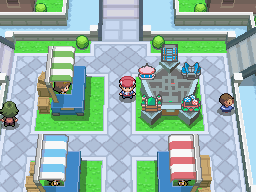
For the amount of time I played this game and the hours of fun stomping the enemy team into the dirt, Platinum delivers in two fronts that have only appeared in one other game from this series that rivals this entry. Those two aspects are a compelling story with good characters, and the other is an incredible amount of replay value; something only Pokémon Black and White surpassed Platinum with. From the fun gameplay to the awesome new Pokémon and how much cool and fun stuff there is to do that actually makes you want to give everything a go, Platinum delivers on so many levels that it isn’t even funny. Step aside, Gen 3, you’ve just met your match.
7.
Wow, I thought I was done praising this game up and down four years ago when I reviewed it. Oh well, I guess. Tell me, what makes a game truly great? The gameplay? That certainly plays a large role. The story? A game’s narrative should be just as good as the gameplay, after all. Good characters? Gotta’ keep the player attached and invested somehow. Graphics? Don’t make me laugh. Now then, what happens when you combine ALL of these aspects? Toss in some sugar, spice, and crippling depression, and you get The Last of Us.

This game makes you have fun and incredibly sad all in the same sitting, but I’m getting ahead of myself. The Last of Us is a masterpiece released by Naughty Dog (the devs behind the Crash Bandicoot, Jak and Daxter, and Uncharted series) that manages to turn what would sound like some Walking Dead fanfiction into an unforgettable, surprisingly colorfully bitter game that never ceases to surprise and amaze the player with a captivating story, well-written characters, and enthralling gameplay akin to what you would expect of the survival horror genre. You’ve got guns and melee weapons at your disposal as well as bricks and bottles you can throw to distract enemies, and in this game, you can scavenge for materials to craft nail bombs, smoke bombs, molotovs, med kits to replenish health, shivs to open locked doors, silently take out enemies, and you can even use what you find to upgrade the melee weapon you’re carrying. As you make your way through a crumbling, ruined America, you can also find small gears lying all around to spruce up your guns and give them some pretty helpful upgrades.
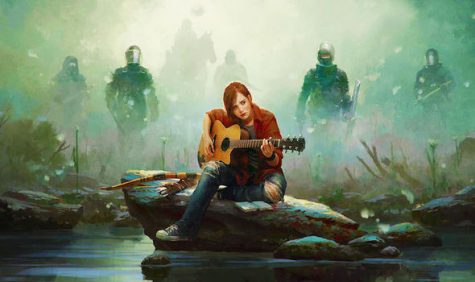
Now, then, here’s where the game really shines: the story. The year is 2014, and we are introduced to a man named Joel and his daughter Sarah. Everything seems to be going okay for them, but mere hours after the day of Joel’s birthday, the world falls into chaos when a cordyceps fungus that has seemingly infected people virally and turns them into horrific, spore-coated zombies. Now, you may be thinking – “Oh, with this mundane load, again! Give me a break, not another basic, bare-bones John Romero wannabe zombie game…”. Believe me, not only does this game manage to make the zombies interesting and horrific at the same time, but it makes the survivors bitter and unlikable, yet gets you to become invested in them. Anyways, a depressing opening sequence and nine years later, we find Joel and his lady-friend Tess on the bum end of a sour deal when the leader of a terrorist group called the “Fireflies” (their goal is to take control of America and find a cure to the fungus), Marlene, comes to Joel and Tess and offers to reimburse them of their lost weaponry and then some if they can smuggle something out of the city they’re in. What they didn’t realize when accepting the job is that they’re not smuggling something, but rather someone. The person in question is Ellie, a sassy teenage girl who is allegedly immune to the virus. They need to get her to the lab where the Fireflies are conducting their research to create a cure, all the while dodging the government and other bandits along the way.
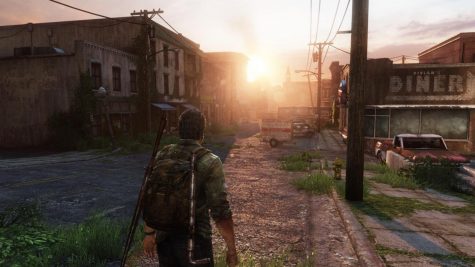
Despite a concept this basic taking center stage for the story, the characters are what really makes the game so memorable. Over time, you start to overcome and deal with Joel’s pessimism because you see near everything that made him that way, and you begin to understand and feel empathetic for him. But, Joel isn’t the only good character in this game. The way Ellie was written was pure genius. They were able to not only make her AI incredibly helpful (something rarely done right), but she embodies how every writer wishes they could write an angsty teen. She has somber moments, she gets mad at Joel for getting pushed away emotionally, her reason to go through with this is spot on, and her interactions feel genuine and realistic, almost, dare I say, like how an actual person would interact. As the game progresses, we see them grow closer and bond with each other, almost like Joel is filling a void he’d carried with him long ago, basically giving him something to fight for. The writing in this game stems from Neil Druckman who has worked with Naughty Dog on previous games, but really gets his chance to steal the spotlight with this tragedy that’ll keep you invested, make you laugh, cry, and maybe learn a thing or two about morality and character.
With a sequel on the way, we can only hope that this time around, the story and characters will be just as well-written and developed as the first game.
6.
Throughout the history of gaming, there have very rarely been games from the JRPG (Japanese-Role-Playing-Game) genre that live up to the legacy that other entries such as Earthbound, Chrono Trigger, 80% of games in the Final Fantasy series, Pokémon, and others. However, who knew that one of the most addictive, simple, and fun games in the genre would come from a single American developer? With the same mechanics, gimmicks and even a similar art style, Epic Battle Fantasy 4 fails to disappoint.
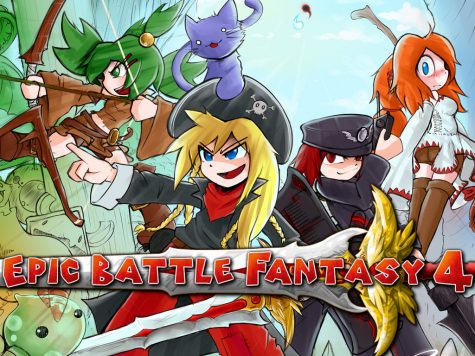
This small, pretty unknown game is exactly what you’d expect from a game with a title like this; a JRPG with crude, self-referential humor and a surprisingly good soundtrack. First off, the rather weak story. After returning to their home world from the last game, our group of rogues are separated, but while they were gone, crystals that are needed to keep the world in balance were stolen by an unknown group of perps who not only got one, but they stole them all. A recurring character who has only made cameos in the previous games named Anna suspects that our reckless mercenaries were behind the theft, but quickly realizes that they’re in the clear, promptly joining them to go get back the gems before the world is leveled by whatever new threat is looming over them this time. While, as previously stated, the story is pretty bland and even a bit cliché, it really doesn’t need to be that strong for this game.
The gameplay is exactly what you’d expect from a JRPG: explore an overworld and solve puzzles for treasure, fight monsters along the way, accept side-quests for incompetent and lazy NPC’s (Non-Playable Characters) who can’t seem to do anything on their own, equip new abilities, upgrade your armor and weapons, destroy the economy by buying every expensive item you come across; the basics of a JRPG. The battle system is a lot of the same, including the summons you can gradually unlock as you progress through the game, the special attacks you can equip and upgrade to your party, limit breaks that allow you to unleash a brutal attack once its meter is filled, but what Epic Battle Fantasy 4 does differently is give the player the option to change their gear mid-battle. This may seem like a concept that makes the game too easy, but really, it gives it a whole new level of strategy and difficulty. If you change your character’s gear, they can’t do anything else for that entire turn, providing an opening to the enemy. But, this needs to be taken into consideration rather often since the game often throws enemies with arbitrary elemental weaknesses in the same battle, typically in different waves.
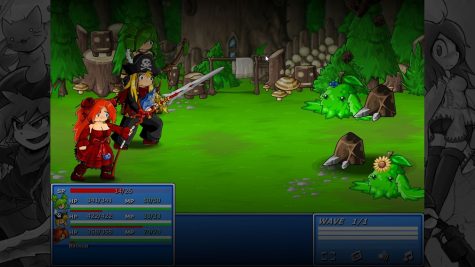
Speaking of the difficulty, this game gets many more hours tacked onto its lifespan due to the “Epic” difficulty setting and Battle Mountain. Allow me to explain: if you’re a video game completionist like me, you’ll want to go for each and every last one of those tantalizing achievements the game has, a good chunk of which can only be unlocked at the highest difficulty where enemies are twice as strong in terms of both offense and defense. This may seem like it’s a relatively simple task that’s doable, if not time-consuming, but Battle Mountain takes that thought and grinds it into the dust, lights it on fire, and dematerializes the ashes of what’s left.
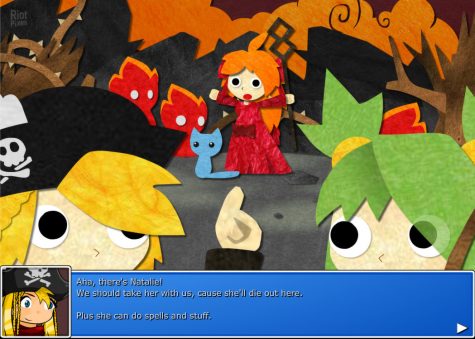
Battle Mountain is an optional area in the game where the player can go to fight hordes of enemies that they’ve already slayed in brutal onslaughts without a break. This may seem easy, like you can just go and level up, make your gear all shiny and tough, and show them how strong you’ve gotten, but you’ll quickly be in for a surprise when you realize that the enemies on Battle Mountain auto-level to whatever level the player is currently at. Yeah. Now, imagine this on Epic difficulty where ALL enemies get increased EVERYTHING. That’s right, you guessed it, they receive twice the health, dish out twice the damage, defense, speed, bloodlust, NOTHING is spared from getting a nice buff which only spells out pain and suffering for the player. That being said, there’s at least a pot of gold at the end of this sadistic rainbow. Wait, let me correct myself. Since this area is entirely optional, it’s more like a masochistic rainbow. Anyways, your reward takes the form of some sparkly achievements, new gear, and the satisfaction of knowing that you have completed the toughest challenge the game can throw at you, all bow before the mighty player who now feels like they could take on anything. “A winner is you!”
Agony out of the way, this is a hidden gem among the countless games on Steam that proves to be what it promises and so much more. You’d be ridiculous to like JRPGs and not give EBF4 a go.
5.
Here’s a game that I’ve been dying to review, but have never known when the right time is to write it up. I guess now’s the last chance I’ll get to talk about it here. Everyone who owns a modern gaming console has already heard the news about the newest big gaming sensation that took the world by storm, and wouldn’t you know it, I may or may not be a bit addicted to it. From the people who brought you World of Warcraft, Starcraft II, DotA II and more, we have the first game in its genre since a certain FPS obsessed with hats to bring color to the table. I give you, one of the most original and diverse games on the market as of two years ago: Overwatch.
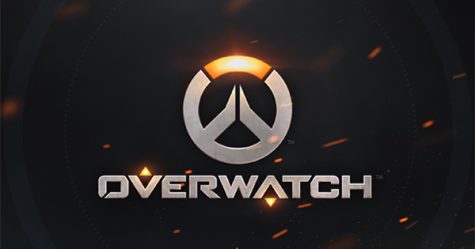
No game has made me want to play online with other people more than Overwatch, which says a lot since I don’t typically like playing online. The game is a 6V6 MOBA (Multiplayer Online Battle Arena) where your team will be placed into a map and must achieve an objective before the opposing team can. While both teams have the same objective, which map you’re given dictates which one it is. It could be a king-of-the-hill sort of game if you get a map like Oasis or Lijang Tower. If you’re given a map like Hanamura or Horizon Moon Colony, your team must capture two points individually, or, my personal favorite, your team will have to capture and escort a payload if you end up on a map like Eichenwald or Junker Town.
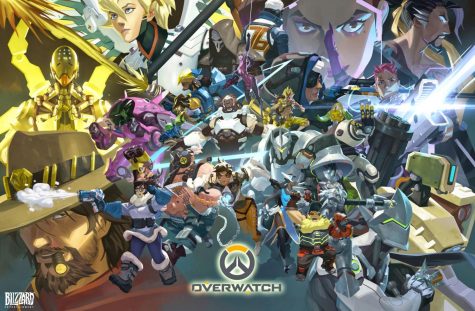
Something that makes this game REALLY shine and stand out is an obvious characteristic most FPS games don’t normally feature: COLOR. I’m sorry, Call of Duty, I’m sure your newest recycled cash-grab is great, but I’m looking for compelling gameplay, and I honestly don’t want to stare at a screen for hours on end that may as well be monochrome. The only other MOBA that’s like this that’s come before Overwatch is arguably the precursor, Team Fortress 2. In fact, most people say that it’s kind of like TF2, but with more variety and less hats. Speaking of things that set that game apart from all other FPS games, something that really gives this game its color is its cast of cool and outlandish characters called “heroes” to choose from. The best part is that no two heroes play the same, mind you, they’re categorized by class. You could pick Tracer, the British time-manipulating poster-child of the game or Reaper, an ex-Overwatch founder who now works for a villainous organization called Talon if you want to pick someone from the offense class. If you wanted to pick one of the defensive heroes, you’ve got characters like the Japanese, bow-wielding Hanzo, and the insane, Australian, explosive-loving, trap-placing Junkrat. Interested in using a tank? You’re in luck with heroes like D.VA, a Korean professional Starcraft 2-player who pilots a giant mech, or even Reinhardt, a German member of Overwatch who uses an enormous suit of armor accompanied by an appropriately large hammer rather than a gun. Prefer to stay out of the enemy’s line of fire and help your team? Then you’re in luck with this game’s wealth of support class heroes like Mercy, the Swiss guardian angel of a doctor who can replenish teammates’ health quickly, boost their attack and even resurrect fallen comrades, or maybe your tastes are more suited for Lucio, a famous Brazilian DJ who rejuvenates his allies with music by either healing them or giving them a nice speed boost.
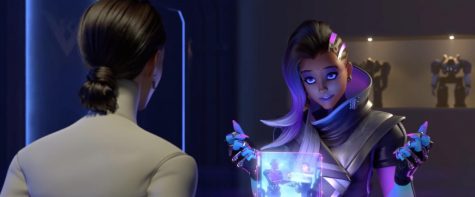
One of the main draws to continue playing are the unlockable customization items that you can equip to the characters such as voice lines, victory poses, highlight intros, and more, but most interest is the various skins. While most are simple alternative colorations for the characters, the legendary status skins are as they sound, but their design matches the title as well. More often than not, they don’t just give the hero a cool, new look, but they even alter some of the basic voice lines they have, already. For example, when the player equips Mercy with her Witch skin from the Halloween event (Junkenstein’s Revenge), it changes the line she says when resurrecting an ally from “Heroes never die!” to “My servants never die!”.
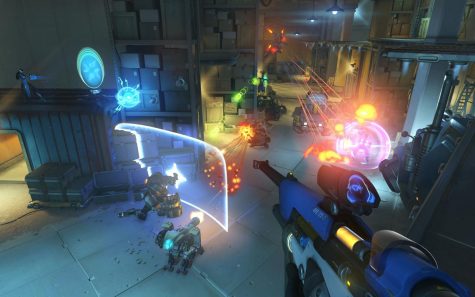
Similarly, some of the best parts of this game come from the interactions alone. With how much lore there is, between the animated shorts to the in-game tidbits, there’s plenty of story to go around. As I said, this leads to some often funny interactions between characters in-game and before matches start. One example of this is when D.VA uses her defense matrix to block certain characters’ ultimate abilities, she delivers a quick, verbal jab at the enemy. The best example of this is when McCree uses his Deadeye ability. He is known for saying “It’s high-noon…” When D.VA blocks his bullet that would usually spell out a swift demise, she says “I think your clock’s off.”

Sure, say what you will about how it utilizes a loot box system or how toxic the community has become, but I believe that the impact Overwatch has had on gaming is one that may not be replicated for years, if ever. For how groundbreaking it truly was for the genre in terms of diversity, its reach is unparalleled. This is an FPS with online-only gameplay that has me hooked and coming back for more. Not since the release of Splatoon have I ever said that. Believe me, this game DOES live up to its golden reputation after all.
4.
Here’s where the games I’ve listed hit a new level of weird. Over the course of this list, I’ve included an underrated puzzle game, an installment from the Pokémon series, a survival horror game that proves to be more of a masterpiece in storytelling, a really well-done JRPG from a developer in the UK, and the incredibly successful Overwatch. What else am I forgetting… Oh, that’s right, a total wildcard that leaves everyone questioning my mental stability. Enter the weird, wild, and wonderful side of games that come from Japan with one of the most famous examples, Katamari Damacy. Never heard of this game? Don’t blame you at all. This beautiful gem came from, of all developers, Namco. That’s right, the same people who possess Pac Man, Galaga, and more created this Playstation 2 oddity.
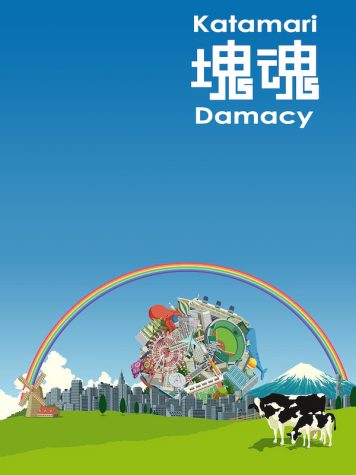
The story is surprisingly easy to follow for a game this strange. You play as the Prince of the Cosmos who must rebuild all of the stars in the sky after his father, the King of All Cosmos, accidentally destroys them while drunk, late one night. So, you may be asking yourself how he does that. By using a ball-like device known as a Katamari to roll over items roughly its size, causing them to stick to the Katamari as you progressively pick up more and more objects, growing your Katamari as big as you can get it. That’s it. That’s all she wrote, pack it up, we’re going home, not much else to see here! I’d be lying though if I said that there should be more to it. A good idea can come in the simplest form, and with how basic yet strange it is, it’s actually pretty smart in design.
Onto the gameplay! With a concept this simple, it’s no wonder that the gameplay itself is borderline therapeutic with how much fun it can be to slowly build up your katamari. At the beginning of the game, you’re rolling up really small objects like mahjong tokens, candies, coins and other items roughly that size. At the end of the game, you’re picking up buildings, whales, and even islands. Excluding the credits screen where, well, I’ll let you find out on your own. The only thing that I have to nitpick over is the difficulty of a few constellation levels.
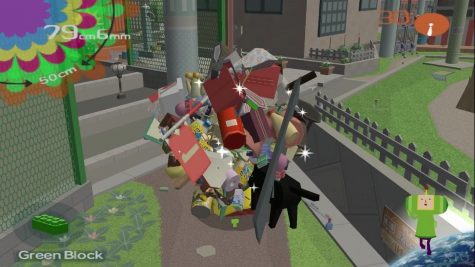
Throughout the game, you have to make around nine different stars, but you can choose to tackle optional levels where you must make a constellation. This may sound hard, but for the most part, it isn’t. Typically, you need to roll up a particular item for it to count such as Cygnus where you need to gather as many swans as possible, or Gemini where only pairs of items count. Then we get to the infuriating, anger-inducing levels that will make you set the game down for a bit and then come back later out of frustration: the singular item variants.
Thankfully, there’s only two of these in the entire game, but if they don’t bring the most rage, I don’t know what will. Simply put, you can pick up whatever you want, but the level ends after you gather one specific object, no matter the size. You may be thinking, “Gee, that sure sounds blissfully easy, is the item hidden or something?”. If you thought that, oh how wrong you don’t realize you are. These levels are LITTERED with items that, if picked up, will immediately end the level. The worst part is that they don’t have to explicably be the item; they can be signs with a picture of the object on it and the game will STILL count it. Since that happens, the Katamari isn’t graded on how large it is, but rather how large the special item you pick up is. This is where it gets absolutely unforgivable if you’re trying to get the largest item available. To think that worrying about treading carefully was your largest concern since there’s always some fast-moving thing that can send your Katamari careening across the area, but now you have to be extra careful about what you pick up as well. Oh, and mind the time limit, because there’s not much time to really think about what you’re doing. Even if you ARE trying to be careful, more often than not, you’ll get pushed by an oncoming obstacle 50 feet away and pick up the smallest object possible. The two levels in question are Ursa Major and Taurus; mind you, Ursa Major is easier. For a game as fun and crazy as this, it’s these two levels that drive me off the wall, bouncing off it and picking up that one object that seems to ruin a perfect run every time.
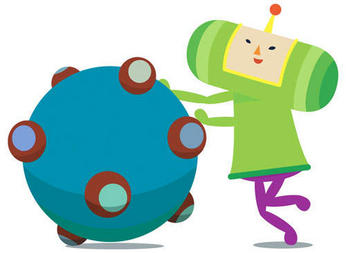
That being said, another highly addictive, charming and downright relaxing part of this game is the soundtrack. I can’t even begin to describe how quirky and fun each track is, but there are three that REALLY stand out among the rest, to me. The first is the smooth and mellow Que Sera Sera, a somewhat jazzy and Sinatra-esque track that never fails to want you to kick your feet up, grab a drink, dim the lights and carry on with the level. The second notable track is the game’s veritable posterchild of the soundtrack which serves as the main theme, Katamari on the Rocks. It’s different, it’s catchy, and it always goes well with wreaking havoc via a giant lump of cars, people, and everything but the kitchen sink- oh, wait, nope, already picked that up too. The last one is Lonely Rolling Star, a track so upbeat and, again, catchy, that rolling up everything as far as the eye can see knowing that it’s going to get shot into space and stay there until the King of all Cosmos decides to go on another bender becomes more fun than you could imagine. Mind you, I haven’t had the time to get around to playing through the sequel, We Love Katamari, but I’ve taken a listen to bits of the soundtrack, and wow, is it just as good, if not better. Rather than give a run-down of that game’s ost, I’ll just leave my opinion of it at: Heaven’s Rain is by-far one of my favorite pieces of music to come from a video game, and that’s saying a lot when you consider that I’ve played games like Scott Pilgrim vs. the World, Ocarina of Time, a game that will appear later on this list, and many more.
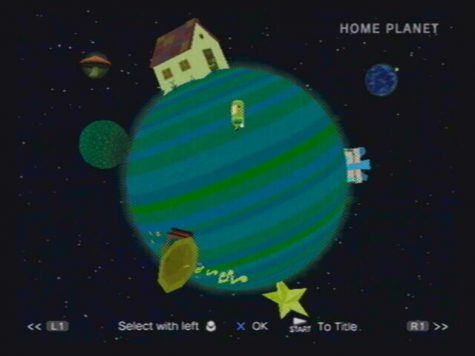
This game is very much a case of: as weird as it sounds, it’s actually really well done and makes for quite the good time. Mind you, Katamari Damacy isn’t easy to find, but it’s also pretty cheap if you look online. For reference on what I mean by cheap, I got a sealed copy of this discontinued PS2 game for $10. So, step foot into the bizarre and off-the-wall world of Katamari, and you won’t want to leave.
3.
Ah, the nostalgic year of 2005. The Playstation 2 was absolutely dominating the market with Nintendo and its neat GameCube as well as Microsoft with its new contender in the console wars, Xbox, following close behind. The PS2 saw the release of countless classics that every gamer knows and loves to this day. From the new kids on the block such as Ratchet and Clank, Jak and Daxter, Shadow of the Colossus, and the previously mentioned Katamari Damacy, to new iterations in game series that were already huge hits beforehand like Metal Gear Solid: Snake Eater, Parappa the Rapper 2, and others; the PS2 library of games was surely not short on classics.
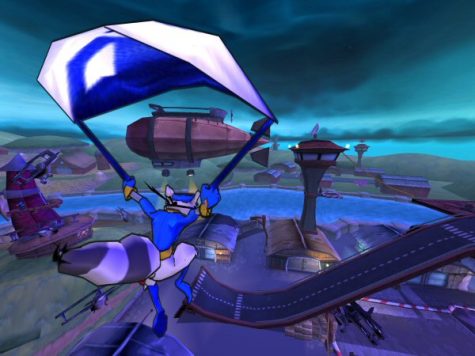
Out of all the titles that were released on the PS2, which became flagship console-sellers that boosted their characters to an icon-like status for Sony, there were a few that became famous faces such as Kratos from God of War, but a trio of game series really gave the other games a run for their money. The trifecta of game series I’m referring to were all closely developed by the group of game devs known as Naughty Dog. Sound familiar? They brought you games such as Crash Bandicoot, Uncharted, and The Last of Us. However, those were all newer titles. What put them on the map aside from Crash which came out on the original Playstation, were Jak and Daxter, Ratchet and Clank, and my personal favorite of the three, Sly Cooper.
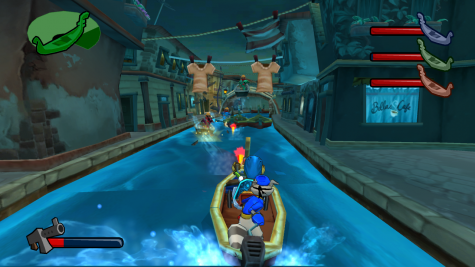
Don’t worry, I won’t swindle you out of this spot on the list, I’m only giving it to one game in the series. The series itself is about Sly, a master thief who comes from a long line of highly accomplished thieves, each chronicling their heists, adventures, and special thieving techniques in a book called the Thievius Raccoonus. Just as Sly’s father was to pass down the book and his cane, (a trademark weapon the Cooper ancestors, each with a golden hook and specialized to the particular heir) a group of villains known as the Fiendish Five broke in, killed Sly’s father and tore the book apart, splitting the pages up amongst themselves. From there, our protagonist was on his own where he met his two best friends and future partners in crime: Bently, the brains of their operations, and Murray, the muscle and getaway driver.
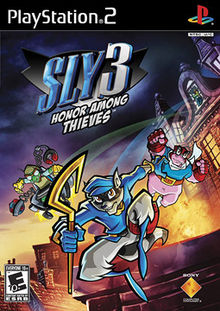
However, despite the legendary status that the second game (Sly 2: Band of Thieves) has taken, being praised as one of the greatest PS2 games ever made, the amazing fourth installment (Thieves in Time), and just how classic the first one is, I’m going to stick to my guns and say that the third game in the series, Sly 3: Honor Among Thieves, is the greatest game in the series, hands-down.
Luckily, if you haven’t played the first two games, the plot kind of trails off a bit, not continuing what the previous games centered their story around, the mechanical menace of an owl known as Clockwerk. But, if you are going to skip the first two installments, you’ll be missing some HEAVY plot points that’ll just leave you confused. Regardless, the game takes place after Sly 2: Band of Thieves (shocker, right?), where we are greeted with a “Beginning of the End” type section where we’re thrusted into the last part of the story with no context except that it’s awesome.
The story goes that every member of the Cooper ancestral line who took up the mantle as a master thief stowed away all of their earnings, heirlooms, technology, and even specialized canes in an enormous, booby-trapped vault on a remote island. An old partner of Sly’s father, Dr. M, found the island and vows to open the vault and loot the place for all it’s worth. However, the vault is made of some pretty sturdy stuff and can only be opened by a Cooper via a lock specially designed to fit the family’s trademark cane shape. That out of the way, the game throws the player into the thick of the climax where we see Sly, Bently, Murray, and a bunch of new additions to the gang staging an assault on the island in hopes to get into that safe and prevent its contents from falling into the wrong hands.
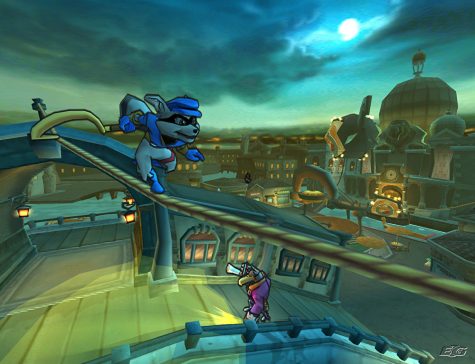
The gameplay is the same smash-and-grab, stealth around like the proper thief you are type of controls that fans already know and love. You’ve got Sly who can use his various ancestors’ techniques to quickly maneuver the area as well as much of the same upgrades you can purchase for him from the previous game, Murray has his typical beat-‘em-up controls, and now Bently gets a revamped method of gameplay due to his wheelchair. What you have to work with now is arguably more. Bently, who is still able to use his signature darts and various types of bombs to take out foes, decided that it would be cool to make the most of what he’s got and shove a bunch of tech into his wheelchair, and what the player is left with is a turbo-boosted, pickpocket-capable, JETPACK-INFUSED wheelchair! Yeah, his legs may not work anymore, but he’s handi-capable of bringing the demise of those who oppose him! FEAR THE ALMIGHTY TURTLE!
Speaking of the characters, this game brings a bunch of new people to the table along with some old faces that both add to the ensemble in spirit and personality, but they’re all playable during certain jobs, and no two are the same. To spoil what they use would spoil the joy of finding that out when they become available. However, what I WILL spoil is that everyone’s favorite sassy, consistently angry, workaholic, Carmelita (a police inspector dead-set on taking Sly and the gang into custody) is now a playable character during certain missions. She’s basically Sly with a gun, a high jump, and none of the cool stealth moves; not to say she isn’t fun to use, though.
I could honestly go on for hours about this game, but if you haven’t checked out this series yet, I urge you to give it a go. It’s a fun dive into the sneaky world of everyone’s favorite thieving PS2 anti-hero. I guess you could say that Sly 3 managed to steal my heart.
2.
Wow, yet another PS2 game on this list, how predictable. We’ve run the table in terms of this list’s content. We have a piece of nostalgia or two, a few titles that stand out in terms of quality, player investment and execution, two of the most recent best-sellers, Katamari Damacy, and now we have an entry that not only encompasses ALL of those traits, except for the last one and the fact that it came out almost 13 years ago.
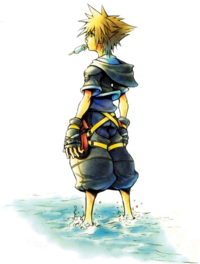
For those of you who have ever played a video game, has one ever stuck with you from the very beginning? Have you ever played a game that not only impacted the way you think of video games, but also the way you perceive the world around you? A game so powerful to you that words can’t do justice to what it means to you? For me, that’s all too real with the game that takes this spot on the list. From the very beginning of my career as a usual suspect for the gaming scene, there have been few games that upon replaying, I have a newfound appreciation for. In this case, it’s been a series I’ve been familiar with from the start, and that game is none other than Kingdom Hearts II.
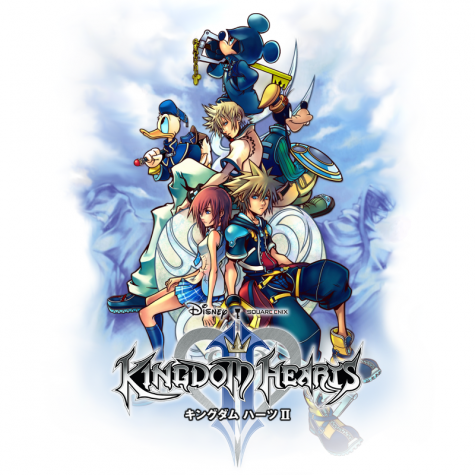
Sweet Ansem, take me back! I cannot describe how monumental this series has not only become to the entire gaming scene, but in my list of personal favorites. Among the first discs and cartridges I laid my hands on, the first game in this series was one of the initial few I had the honor of playing; shortly after it was released too, how perfect. However, it wasn’t until the sequel that I REALLY got hooked. The first game was fantastic, if not a little clunky in it’s own regard, but the second game took what the first game did astoundingly right along with the things it didn’t do as well, and refined it until everything was near perfect. The controls, the story, the character development, the convoluted plot, it’s all back, and it’s all even better.
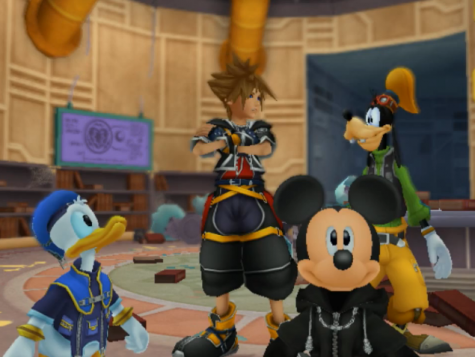
Alright, alright, for all 20 of you out there who have no clue what Kingdom Hearts even is, here’s the deal. The game itself is a partnership between Disney and Square Enix (previously Square Soft before a merger), the minds behind Final Fantasy where the worlds of the two are joined together, tossing in some new and somewhat interesting characters into the mix as well. The long story short is that in this world, light and dark forces are constantly battling it out in hopes of overturning the balance that exists between the two. Those who go on to fight the darkness wield what’s known as a Keyblade, a special kind of sword meant to vanquish the Heartless which are evil beings that steal the hearts of those they defeat. Fast forward to after three students in training to wield said weapon become entangled in a scheme by a man named Xehanort who manages to manipulate one of the three and turn another against the others. These kids are sort of the spiritual predecessors to Sora, Riku, and Kairi, our protagonists from the first game. After their home is invaded by the Heartless, Sora sets off to find his now-missing friends and come to grips with the shiny new Keyblade he now happens to be the owner of, whether he wants it or not. The king of this world, Mickey, sends his two best men (Donald and Goofy) to find Sora and protect him on his quest to thwart the Heartless from constructing Kingdom Hearts, a method in which to unleash darkness unto the world that takes the shape of a large heart-shaped moon. The group behind this is called Organization XIII, comprised of beings called Nobodys. What’s a Nobody? The husk of a person who was defeated by the Heartless. Their goal is to complete it and create hearts for themselves. Is there an end to this rabbit hole that we refer to as a plot? Not even in the Alice in Wonderland world in the first game, so good luck, you’re on your own. It gets even more complicated from here, because believe it or not, this is just skimming the surface of this incredible story.
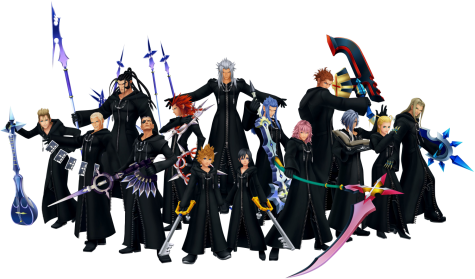
Wow, okay, so now that the story is out of the way, we movie onto the gameplay. Everything in the second game is now much smoother than and not quite as clunky as the controls in the first game; the hack-and-slash gameplay now doesn’t feel as much of an inconvenience, combos are easy to string together, traversing the worlds doesn’t feel slow and tedious, and combat has been refined so that everything Sora does stops feeling so stiff. Thankfully, Kingdom Hearts II doesn’t just polish the battle system from the first game, but it builds upon it, bringing neat new features like the drive system where our spiky-haired protagonist can whip-out a second keyblade and go to town for a limited time. The summons are back with a rather pleasing lineup, and helpful abilities to boot. The Gummi Ship sections are back and just as customizable and fun as ever, and the constant homages to both Final Fantasy and Disney are a welcomed addition.
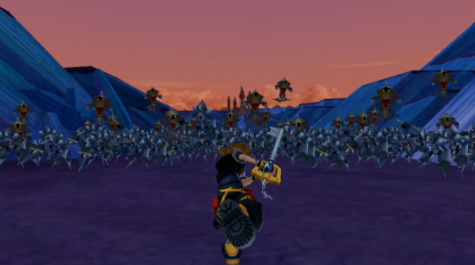
This game not only lands in the number two spot on my list because of the nostalgia it brings me every time I play the game, but because it expands upon a world I had already grown to love and enhance everything it did right, insanely complex plot and all. Take note, developers, this is how you do a sequel.
As a side-note, I actually somewhat enjoy the beginning of this game that many deem too long and boring. Have a problem with that? Too bad.
Honorable Mentions (quickly and in no particular order)
Bioshock Infinite
This is easily one of the most riveting games I’ve had the honor to play. Sure, sometimes a bit pretentious, but the gameplay of the past installments returns with a few cool additions to it and a welcomed change in scenery that still manages to stay in character for the series. Definitely give this one a go if you haven’t.
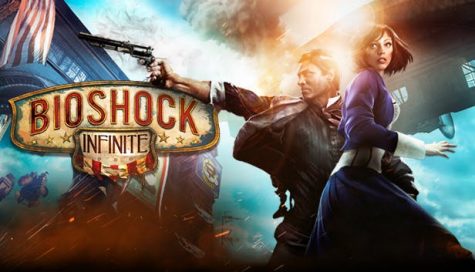
Payday 2
Alright, I’m officially hooked on this game. A hilariously over-the-top yet serious heist simulator has never sounded so appealing, especially with friends. With a third game on the horizon for this tight-controlled, fast-paced, and fun masterpiece, there’s no excuse for not trying this game.
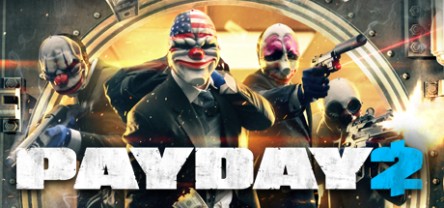
A Hat in Time
I’ve already proclaimed my love for this game back in the same article I did for Payday 2 (Steam Games IV), and this charming masterpiece still has me entranced by its Super Mario Sunshine-inspired gameplay and adorable protagonist. Looking for a quick game to complete that’ll make you a fan of it? I would immediately point you in the direction of this indie gem.
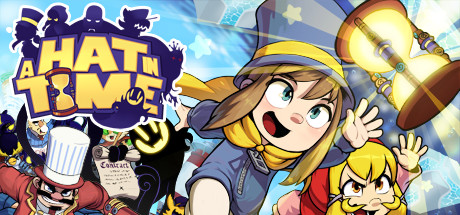
Battlefront II (2005)
Through and through, this is a classic for many (including myself). I simply adore this Star Wars themed shooter that takes players through many of the locales synonymous with the beloved franchise. From Galactic Conquest to Instant Action, I can’t do this game justice. Even to this day, I’ll still pick the Assault game-mode on Mos Eisley.
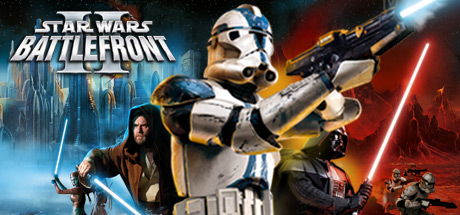
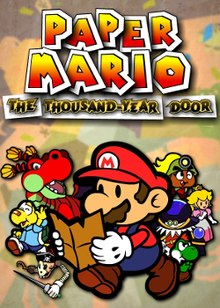
Paper Mario: Thousand-Year Door
Whoever said the best Mario games are all 3D platformers can leave the premises before I make them leave because Paper Mario: the Thousand-Year Door is one of my all-time favorites. Want to play as Mario in a turn-based RPG? This is one of the best examples of breaking the traditions of everyone’s favorite mustachioed industry-saver. It’s quirky, it’s always a blast, and it can actually be rather funny. This is one GameCube classic I wouldn’t pass-up anytime soon.
Legend of Zelda: Wind Waker
Now THIS is how you do a Zelda game (prior to the release of Breath of the Wild). As a matter of fact, I’m noticing a lot of similarities between the two. Sure, prior to the Wii U remastering, sailing across a flooded version of Hyrule felt tedious without a speed boost, but it’s still fun either way. With open-ended gameplay and an insane amount of possible exploration, it’s sure to please. No matter which version of this you play, I can’t recommend it enough.
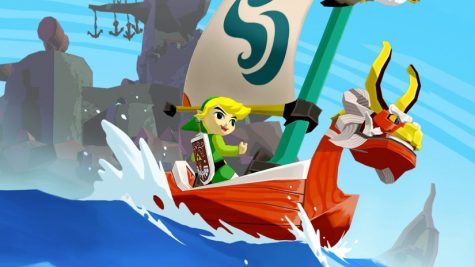
1.
Out of the 15 years I’ve been playing video games, there exists a bar that was set by a single game series, and a single game series alone. However, this bar wouldn’t be set until I was about thirteen. Enter the FPS (First-Person-Shooter) genre, a generally unexplored territory for me at that time. On a whim, I decided to dip my toe into the mature genre of gaming, but when I did, I did so with a game that would change my perspective on how I play games, and why I do.
As you may have put together up to this point, there’s two things I value more than anything in a game: A good story with excellent characters, and great gameplay. While my first experience was with the first game in the series my number one pick is a part of, I wouldn’t get my hands on it until Christmas of 2013. But, boy when I finally popped it in and sat down with a close friend to play it, I was blown away. Tell me, what do you get when you combine an FPS with RPG (Role Playing Game) elements, a good story, an INCREDIBLY memorable villain, and absolutely amazing co-op gameplay? Well, to answer your question, you’d get the masterpiece released by Gearbox and 2K Software in 2012: Borderlands 2.
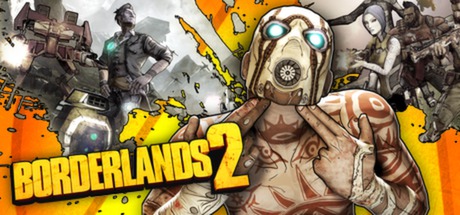
That out of the way, the story is pretty simple. A few years after the events of the first game, and an even shorter timeframe since the end of Borderlands: The Pre-Sequel, a gun manufacturing company called Hyperion begins quickly taking over the planet of Pandora in hopes of opening the vault. Vaults are said to be legendary caches of alien technology, weaponry, and unimaginable riches. As its name implies, vaults can only be opened with a key, typically broken into several fragments, each guarded by a Pandoran bandit stronger than the last. That being said, Hyperion has already set up camps all across the land, practically clutching the planet in the palm of their hand. The leader of the operation and CEO of Hyperion is a man known as Handsome Jack, and he is easily one of this game’s strongest highlights. More on him later, though. His goal is to use whatever is in the vault to purge the planet of the “bandits” and start fresh with Hyperion backers who are either dumb enough or scared enough to side with him.
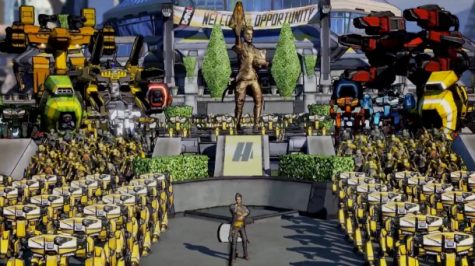
With a man as dangerous and psychotic as Jack out to open the Vault, there stands a resistance who made their goal to stop Hyperion and put an end to Jack’s reign, the Crimson Raiders. Behind this organization are the Vault Hunters from the first game: Roland, Lilith, Mordecai and Brick, along with a couple other familiar faces from the first game such as Moxxi, Scooter, and everyone’s favorite annoyance, Claptrap. They formed this group to put an end to Hyperion’s quickly-tightening grasp on the Vault. In the game, you have the choice of four new Vault Hunters with two other DLC (Downloadable Content) Vault Hunters who are almost killed from Jack’s plot to lure those seeking out The Vault and eliminate them before they have a chance to even get close.
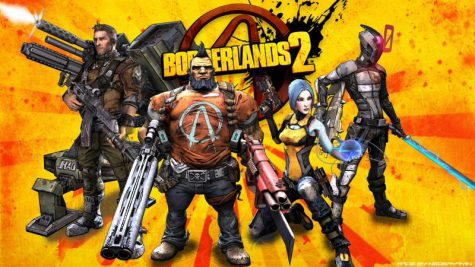
Just as the first game, each of the Vault Hunters comes with his/her own weapon proficiencies and a special action skill. Axton: The Commando specializes with assault rifles and can briefly deploy a sentry turret (that he’s hinted at being romantic with), Maya: The Siren utilizes sub-machine guns and elemental weaponry as well as be able to Phasewalk which she can use to put enemies into a state of suspended animation and unload on them, Salvador: The Berserker is skilled with shotguns and can temporarily whip out a second weapon at the same time and cause mayhem, Zer0: The Assassin is exceptionally deadly with snipers and his D3c3pt10n (Deception) ability, which allows him to cloak himself and unleash devastating melee attacks with his sword and kunai, Kreig: The Psycho specializes in explosive attacks and can go into a rampage where his melee attacks get a huge damage buff, and finally Gaige: The Mechromancer who is good with pistols and can summon her robotic companion De4th-TP to wreak havoc.
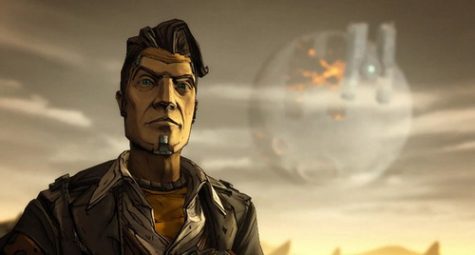
Speaking of memorable characters, what’s a good story without a good antagonist? Something that made this game stand out above most is the villain, Handsome Jack. If you’ve ever played Banjo Kazooie on the Nintendo 64, you may draw parallels between him and the antagonist of that game, Gruntilda, due to they both consistently mock and taunt the player throughout the game. However, unlike Grunty, Jack manages to make each and every interaction amazingly funny and completely anticipated. Some of the best lines from the game come from this psychopath, alone. From naming his pony made of diamonds “Butt Stallion” to the fan-favorite improvised line “These pretzels suck…”, it’s both the delivery of the lines and how ridiculous some of them are the solidify them in the player’s mind forever. Not only is he memorable due to the comedic factor, but when you think about it, Jack kind of has a point about how dangerous the people of Pandora are, and that what his plan would accomplish is exactly the only solution. Something else about how awesome Jack is as the villain of the game is that, when you finally learn about his backstory in Borderlands: The Pre-Sequel as well as a few plot points later on in the second game, you actually become rather sympathetic for him and realize that he’s just a man with ambition, a rough history, and quite the ego. If you feel genuinely bad for the antagonist, the story’s doing something right.
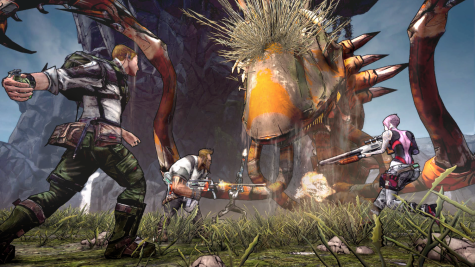
The co-op from the first game was tweaked and upgraded to make the four-player gameplay even more fun than ever. This game is one of those shining examples of a game that has strong single-player gameplay, but even stronger multiplayer gameplay, especially with a maximum party of four. The game even encourages playing with a team of four since the difficulty is amped up when you have more people with you, which means better loot will drop from enemies. Some of the most fun I’ve had with this game is when I play it with a team of my friends, proving to be a hilarious and incredibly enjoyable experience. Playing with more people (especially with people who don’t know the game’s story already) makes the experience even better when plot twists happen and everyone just loses their mind. While I’m mentioning them, the plot twists are well-executed and pretty surprising, offering a good amount of spice to the story and fueling you even more to find out what happens next.
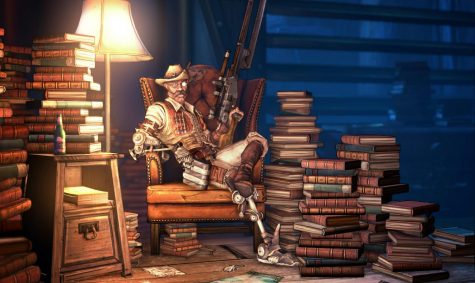
I can’t do this game enough justice since its mark has already been made apparent since six years after its release, it’s still doing quite well, and with Borderlands 3 on the horizon, I certainly can’t wait to return to the universe of the game, but I urge you to keep an eye out for it since I won’t be here to tell you all about it. But, if after all this time, you still care to keep up with what I have to say about games or watch me play them terribly, you can always check out my YouTube channel under the username NXPS Jon.
After four long years of writing for this paper, it’s a little sad to know that this will be the last article I ever publish for The Stampede. I want to thank each and every single one of you who read every issue, or just came for my ramblings about video games and anime. It truly means a lot that someone would take the time out of their schedule to actually read through something I typed up. I could have very easily taken journalism for a single year and call it done, but it’s what I love to do, and I’ve always thought that I had unfinished business since the first article I typed up as a freshman. I suppose that my work is done HERE, whether I want it to be or not. You’ve all made this whole process more rewarding than you’d think, and for that, I can’t thank you enough.
Dosvidaniya…
Jonathan Ross, Former Staff Writer

